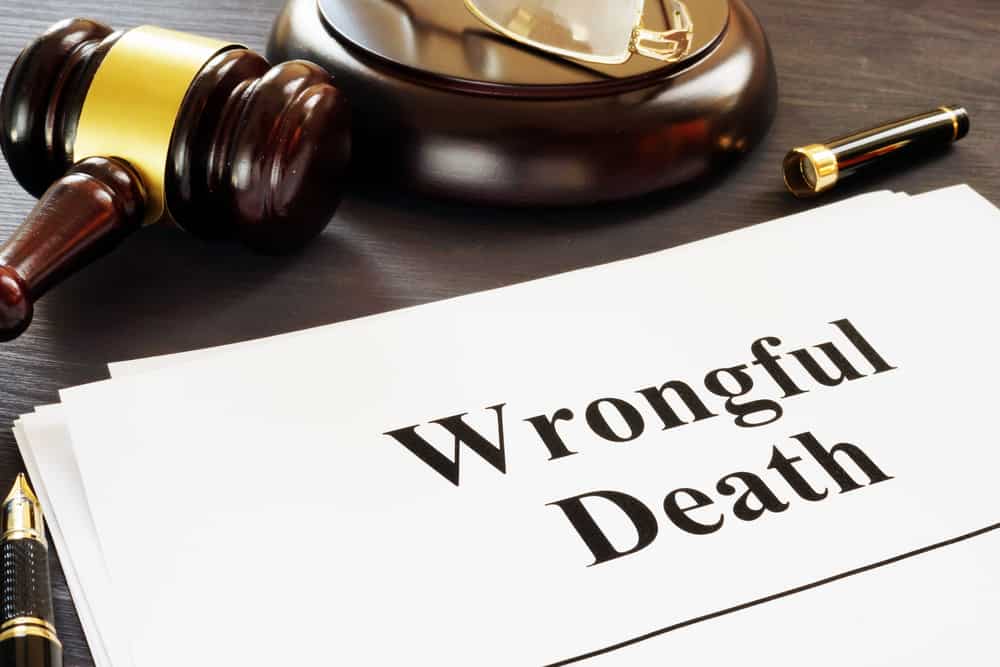Wrongful death lawsuits are usually instigated by the surviving family members of a person that died because of negligence or misconduct. They seek compensation for the loss of income, lost companionship, funeral expenses, etc.
1. Situations applicable to wrongful death lawsuits
These cases arise from the wrongful actions of a defendant. If the person who died had a valid personal injury claim, then a wrongful death claim can arise.
One example is when a person is killed intentionally, like with the deaths of Nicole Brown and Roald Goldman at the hands of O.J. Simpson. Besides the state’s criminal case against him, Simpson also faced a wrongful death lawsuit in civil court.
Medical malpractice is another example. A wrongful death lawsuit is instigated if a doctor fails to diagnose a condition, fails to provide the correct treatment or care, causing the death of a patient.
If there are fatalities in a car accident involving negligence, wrongful death lawsuits are often instituted.
These are just some examples. Wrongful death lawsuits can arise from almost any other personal injury situation. However, there is one exception: work injuries resulting in death are always handled through workers’ compensation insurance.
2. Wrongful death lawsuit requirements
There are several requirements for bringing forth a wrongful death lawsuit. These include:
- The person’s death must be caused by another person’s negligence or by the other person’s intent to cause individual harm.
- The surviving family members must suffer monetary loss because of the related death.
- The claim must meet the time constraints of the statute of limitations for the state where the incident occurred. However, if an investigation into the death is ongoing, the lawsuit can be filed after determining the cause of death.
3. Types of wrongful death damages
The main measures of damages in a wrongful death lawsuit are monetary damages. In addition, they include the loss of support and services, medical expenses and funeral expenses, and the loss of any future inheritance.
In most states, there are negligence statutes that outline who can receive damages and the type of damages a court can award in a wrongful death lawsuit. In addition, each state provides an amount that constitutes fair compensation for the fiscal or financial injuries resulting from a person’s wrongful death.
A person sharing an estate with a deceased person can recover expenses for medical care and funeral expenses. In addition, the court may award interest payments starting from the time of the person’s death.
Other categories of losses include the deceased person’s pre-death pain and suffering, the loss of care and guidance, and the loss of love and companionship.
4. Persons allowed to bring a wrongful death claim
Wrongful death claims are usually filed by a representative of the deceased’s estate on behalf of the survivors. Usually, these survivors are related to the victim, but the degree of the relationship differs from state to state.
A spouse can bring a wrongful death action on behalf of their deceased spouse in all states. The same applies to the parents of minors that die. Children can also collect compensation for the death of a parent.
When it comes to wrongful death claims made by the parents of adult children, adult children for their parents, grown siblings, grandparents, or extended relatives, states start to disagree. The more distant the familial relationship is, the harder it becomes to institute a wrongful death case.
In some states, marriage isn’t a requirement, and the deceased’s partner can bring a wrongful death claim. Also, a person who is financially dependent on the deceased can bring a wrongful death claim.
5. Proving wrongful death
In a wrongful death lawsuit, the burden of proof required is a complex process. A lawyer must gather evidence proving all the claim elements and often needs to call on expert witnesses.
Holding the defendant liable in a wrongful death claim means that the plaintiffs must meet the same burden of proof that the victim would have needed if they had lived. For example, in a case of negligence, it must be shown that the defendant owed the victim a duty of care but that the duty was breached, making it the direct and proximate cause of the death. It must also be shown that this person’s death is the reason damages are sought.
6. Determining wrongful death settlements
Several factors determine the amount of the wrongful death settlement. These include the age of the deceased, the medical bills accrued, burial expenses, and the value of the pain and suffering. These are determined by using the multiplier or per diem method.
7. Receiving the settlement payout
Once a wrongful death lawsuit is settled, the total amount determined is sent by the at-fault party’s insurers by check to the lawyer of the survivors of the deceased. The lawyer first deducts the fees due and any other legal costs before sending the rest to the family or the executor of the dead person’s estate.


